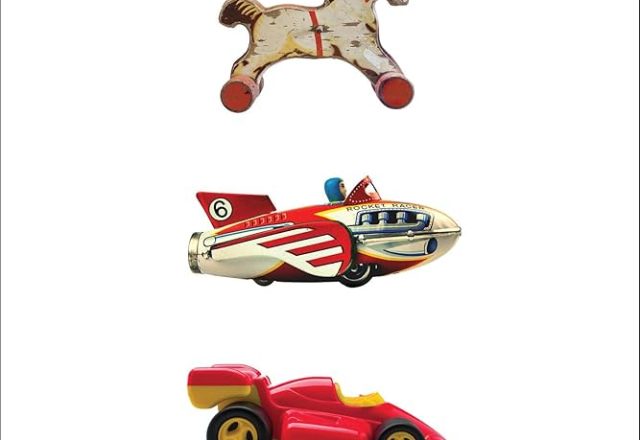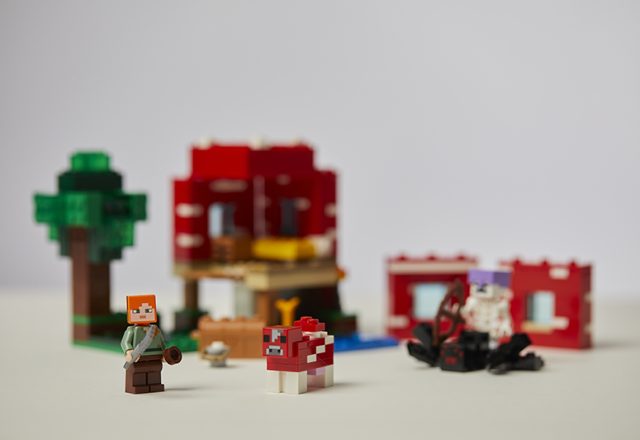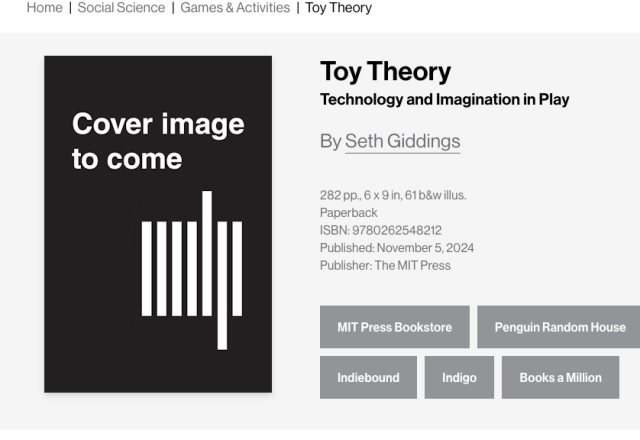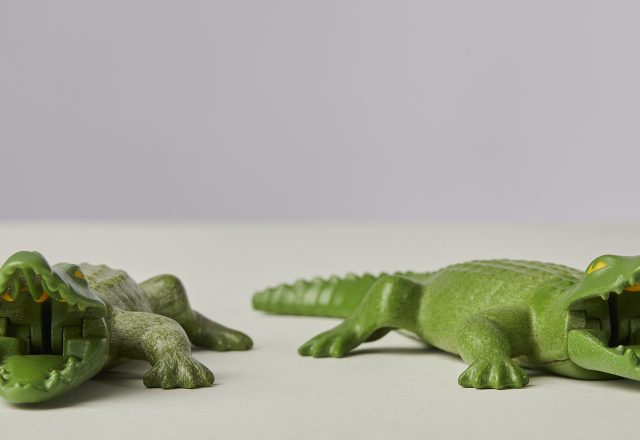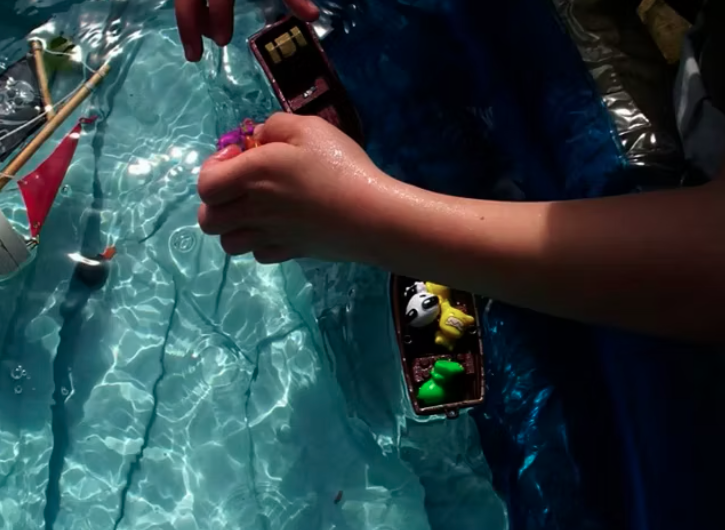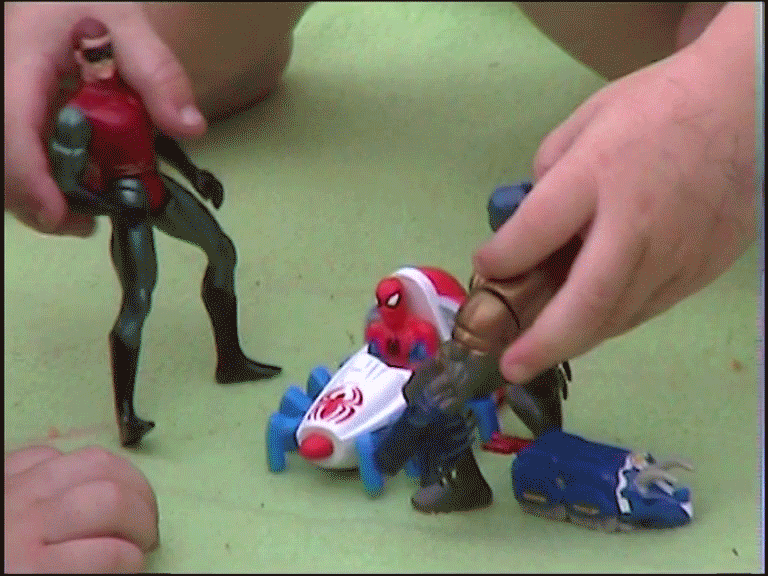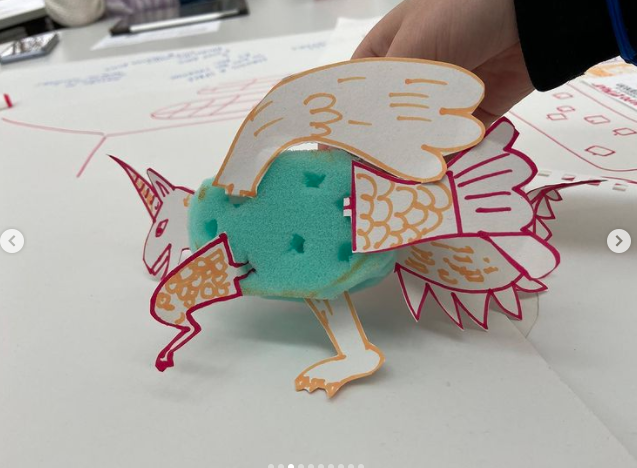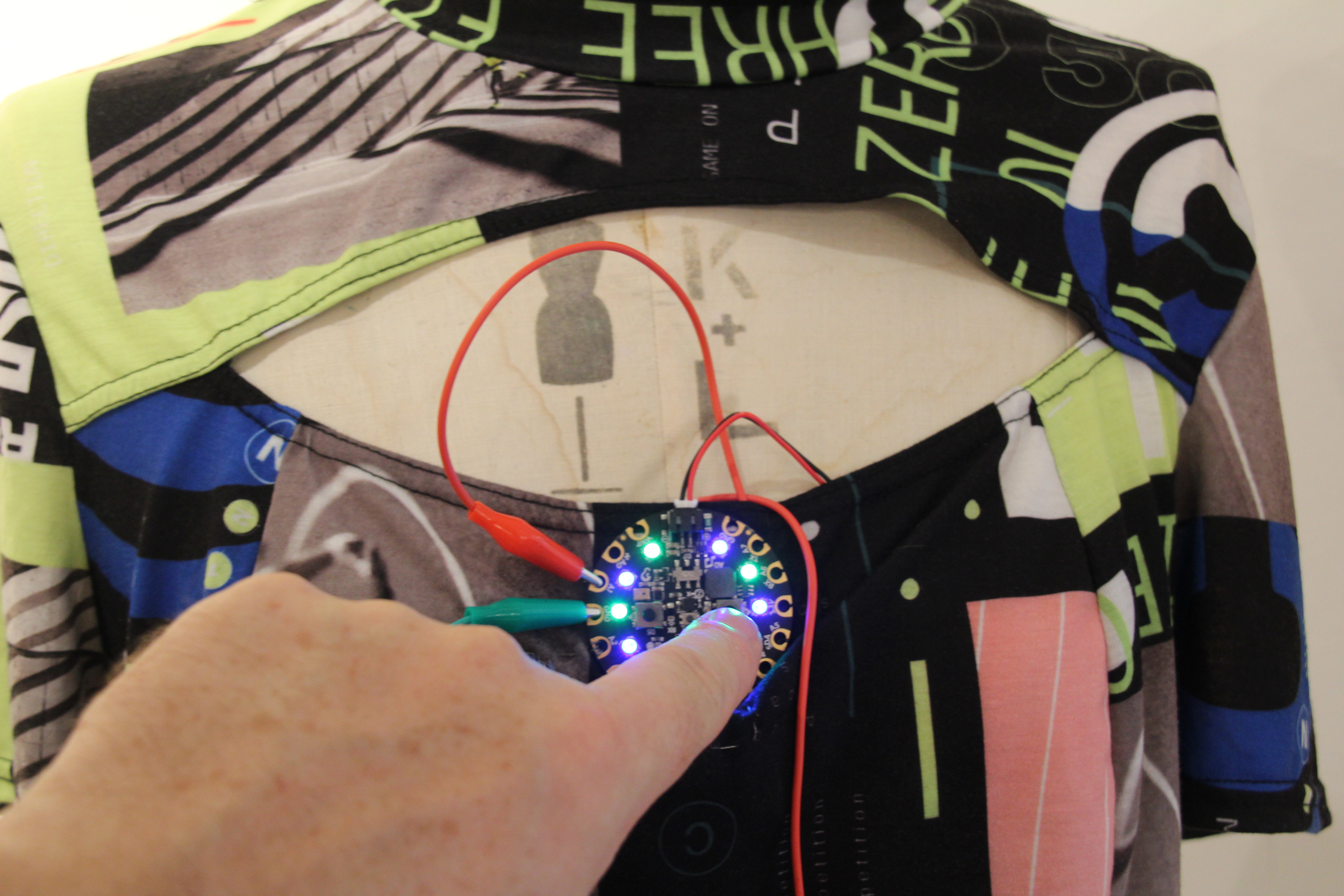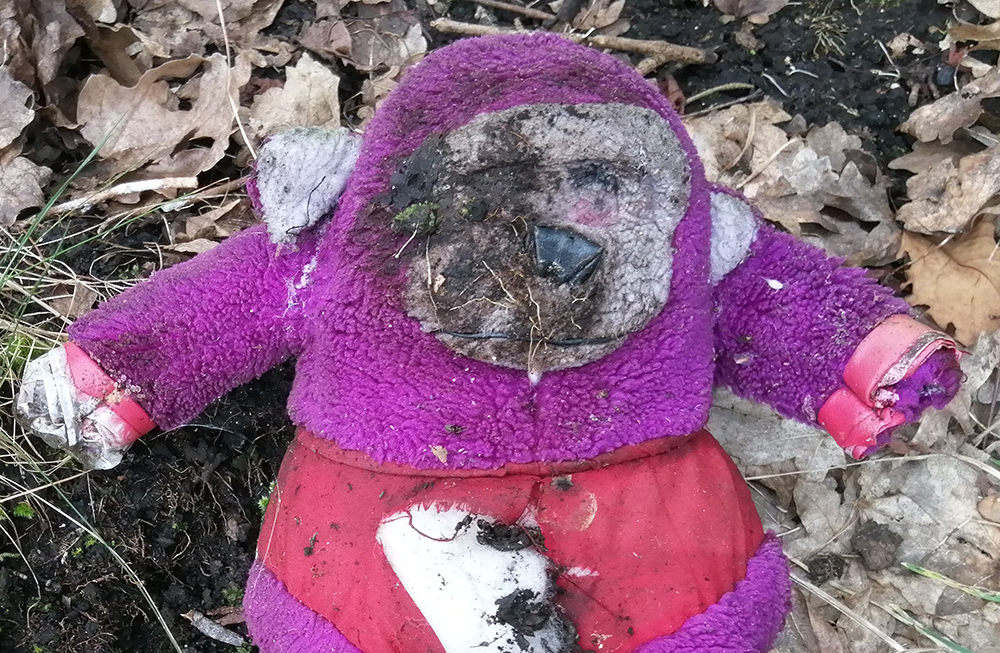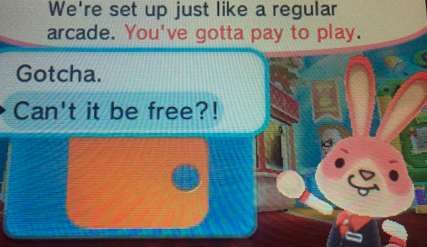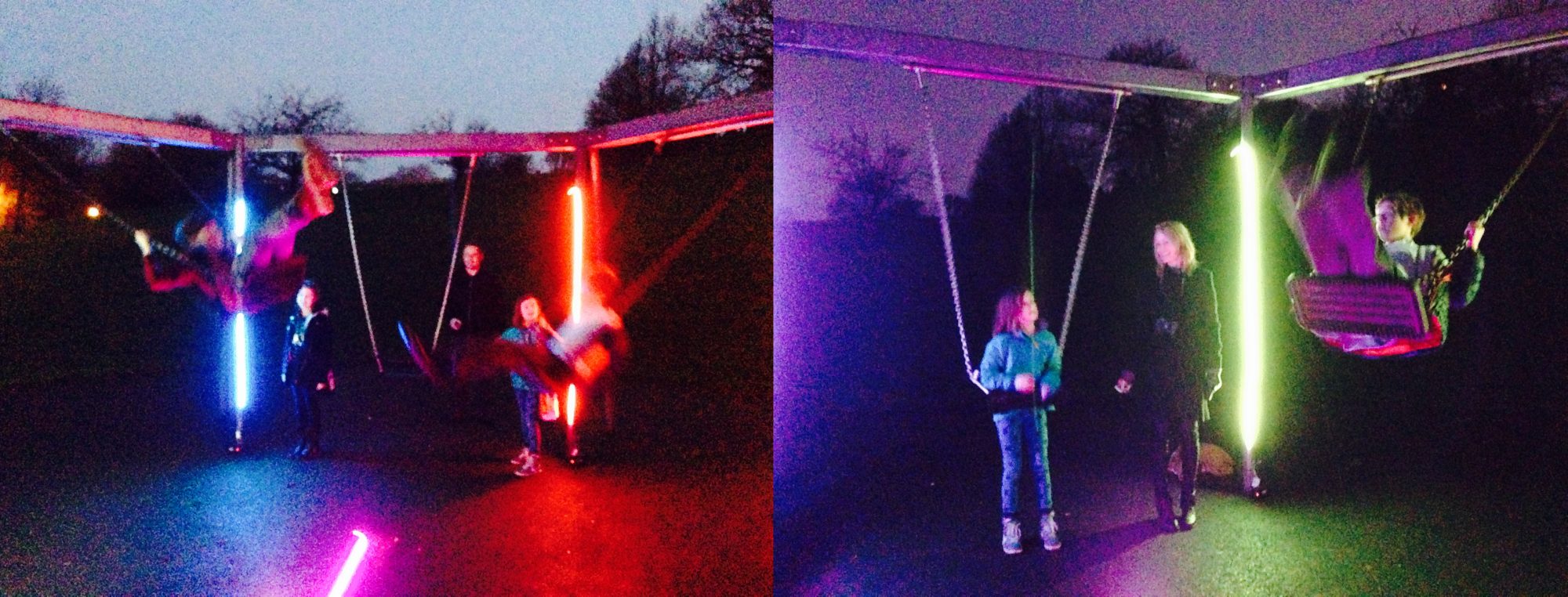Out in paperback and open access 5th November 2024
Tag: imagination
Toy Theory
Out in November 2024: Toy Theory: technology and imagination in play. The MIT Press A novel interpretation of the history and theory of technology…
Toy Theory – update
Toy Theory: technology and imagination in play will be out in November. No cover image yet, but here is the draft marketing blurb: A…
toy animals
This article – in Cultural Politics 20(1), March 2024 – maps the child’s toy and media environment as one populated with artificial animals, from…
Mr Happy
This video essay ‘Monsters, mini-games and Mr Happy’ was originally published in Audiovisual thinking: a journal of academic video, no.2, September 2011. The journal seems…
touch toyetics
A toy stops being a toy when it is no longer touched the relationship between the hand and the toy [is] an example of…
industrial creativity
Lovely responses from year 2 BA Graphic Arts students to my talks on the ideologies and practicalities of industrial creativity and play. I love…
Surviving the Singularity
Please go here: http://www.microethology.net/robot-zoo/
Toy Theory
My book, Toy Theory, will be published by MIT Press in 2023. Here’s a section of the proposal: Headline Rethinking culture, media, technology and the…
the game economy
Video of my keynote talk ‘The game economy: designing for, and playing with, the digital era’, for ICOFEP 4: Economics, Finance and Management in…
economic imaginary
Economic imaginaries are no mere abstractions or illusions, they shape the design and reception of games as technologies and as commodities, facilitating and scaffolding…
postindustrial playground
[For all the changes to children’s playground equipment from the Edwardian era to today], the proprioceptic and vertiginous pleasures of swinging and sliding persist,…
